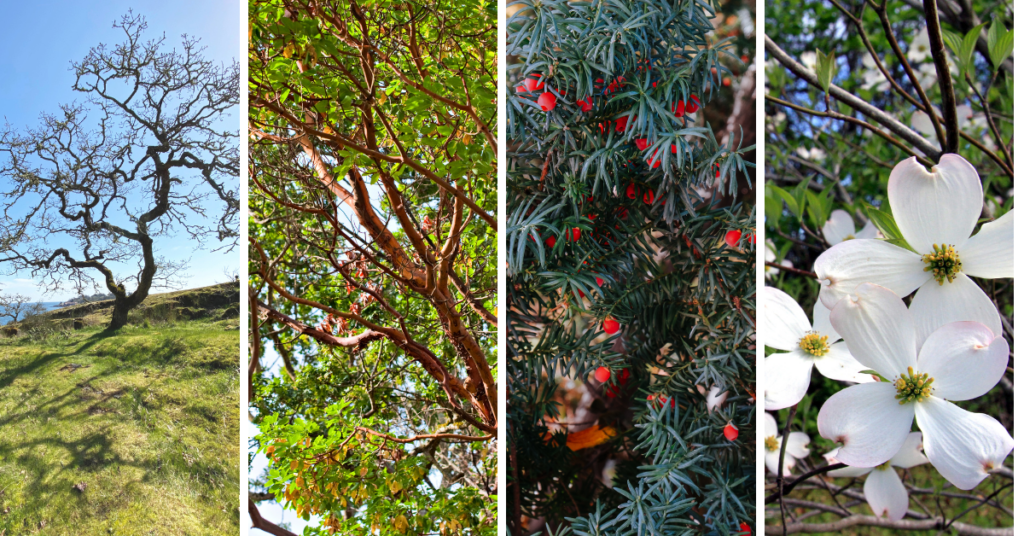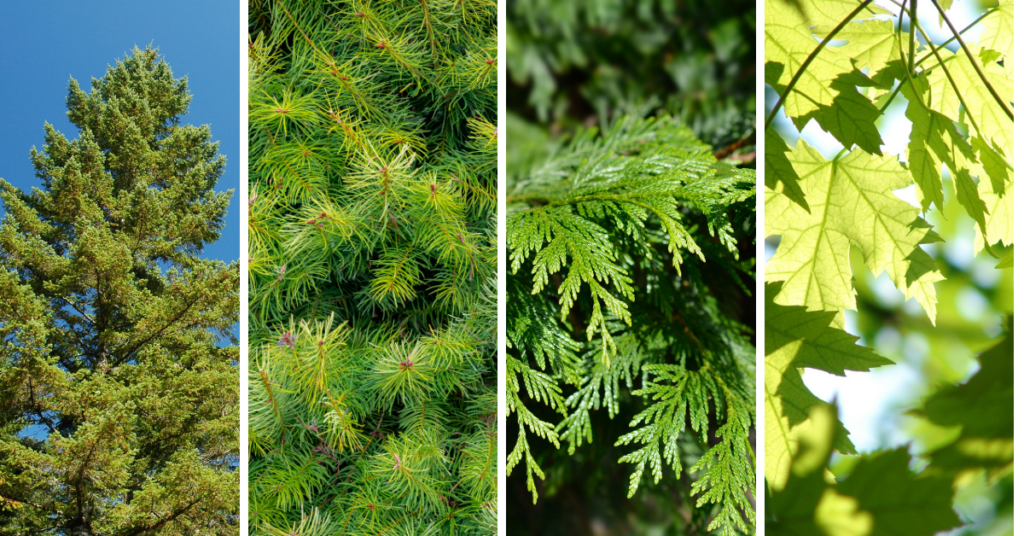If you plan to alter or remove trees on private property in Saanich, it’s important to understand the Tree Protection Bylaw. Saanich is dedicated to preserving its natural environment by regulating the cutting, removal, and replacement of protected trees. Protected trees require a permit for pruning, removal, or work nearby—even if dead or dying. If tree removal is part of a development application, Saanich Parks reviews the request during the process.
Protected Trees
What is considered a protected tree?
(1) ANY trees over 60cm in DBH (Diameter at breast height is a standard method of measuring the diameter of the trunk or bole of a standing tree.
(2) Some native tree species are protected earlier in life, see the two special categories below:
(a) Tree with diameter greater than 4cm measured at 15cm above grade OR greater than 2m in total height:
(i) Garry Oak
(ii) Arbutus
(iii) Pacific Yew
(iv) Pacific Dogwood

(b) Trees with a DBH greater than 30cm:
(i) Douglas-fir
(ii) Grand-fir
(iii) Western Redcedar
(iv) Bigleaf Maple

(3) ANY tree located on municipal property
(4) Wildlife tree (must have visible nest of raptor, osprey, or heron)
How do I measure the DBH of my tree?
Measure the diameter of the tree at 1.4m (4ft, 7-inches) off the ground. If the tree is on a slope, measure from the highest point of natural grade around the tree.
Diameter can be found by measuring the circumference at this point and dividing by pi (3.14)
How do I calculate the DBH of my tree if it is multi-stem?
Measure the DBH of the three largest stems and add them together. The total of the three is the DBH.
Permits
Do I need a permit?
A permit is required when you wish to:
(1) Remove a protected tree or
(2) Conduct significant pruning on a protected tree that would be considered “altering”:
(a) Altering means making cuts larger than 10cm (4-inch) in diameter and/or removing more than 25% of the total canopy volume in one year. *Please note, topping or removing the live crown of the tree is not allowed
While the bylaw outlines what constitutes significant pruning, understanding Proper Pruning Practices can help ensure that your tree care aligns with both the legal requirements and health of your trees.
How much does a permit cost?
Tree Pruning
There is no fee for a pruning permit.
Tree Removal
If the tree removal is not related to a development project, there is no fee, however there is a $300 per tree replacement tree security deposit (refunded after replacement tree is planted)
If the tree removal is related to a development, there is a fee of $100 for the first tree, $30 per additional tree, and a $700 per tree replacement tree security deposit (only the security deposit is refunded after replacement trees are planted). If removal of a protected tree is unavoidable, it’s important to plan the removal at an optimal time to minimize impact. What is the Best Time of Year to Remove Trees? provides insights into the best practices.
What can you prune without a permit?
(1) Branches up to 4-inch (10cm) in diameter
(2) Remove up to 25% of the total canopy of the tree
Replacement Trees
What are the replacement tree requirements?
1:1 Replacement ratio. That means one (1) tree is to be planted for every one (1) protected tree removed.
What counts as a replacement tree?
Replacement trees can be any variety provided they meet these requirements:
(1) Size requirement at time of planting:
(a) Deciduous: Not less than 4cm in diameter, measured at 15cm above ground
(b) Coniferous: Not less than 3m in height
(2) Replacement trees can be planted anywhere on the property as long as there is sufficient soil volume and space for the tree to thrive. It cannot be planted within three (3) metres of a building, or one (1) metre of a property line. It does not have to be planted or inspected by an Arborist, feel free to plant it on your own. Proof of planting must be provided to have your deposit refunded.
Do I have to plant a replacement tree?
Yes, if you conducted a permitted removal of a protected tree, you are required to plant replacement trees at a 1:1 ratio for every tree removed.
In rare circumstances when the Director of Saanich Parks determines that the lot cannot accommodate the required number of replacement trees, the security deposit may be kept as cash-in-lieu of planting.

Refer to the bylaw for more information on how it applies to you. If you need professional tree services, Anchor Tree Service can guide you through the permitting process and help you comply with local regulations. For more information, visit the District of Saanich’s website. To navigate the complexities of the Tree Protection Bylaw and ensure the health of your trees, consider consulting a professional. Why Should You Hire An ISA Certified Arborist? explains the benefits.


